Much has been written about the film ‘Deep Throat’ since it premiered in New York in June 1972.
You know the story… the film spawned the ‘porno chic’ phenomenon, turned Linda Lovelace and Harry Reems into overnight stars, and broke box office records. Its cultural significance was debated by academics, Linda Lovelace’s alleged mistreatment was highlighted by feminists, and a landmark court case was fought in Memphis.
But even for us at The Rialto Report, it’s a tired old tale.
Surely there’s nothing left of interest, no stone unturned?
Actually, yes there is.
In fact, we think that the most interesting ‘Deep Throat’ story has yet to be told.
Forget Lovelace and Reems, the trials and the mob, and the paralysis of the cultural analysis.
We wanted to know about the mysterious Dolly Sharp who portrays Linda’s friend ‘Helen’ in the film. Who was she? Where did she come from? And why did she disappear shortly after the release of ‘Deep Throat’?
For the last ten years, The Rialto Report has searched for answers about Dolly Sharp and her life.
Now, for the first time, her surprising and remarkable story is revealed.
It’s another weird and wonderful story from the world of 1970s adult film. It’s another Rialto Report.
Biographical note: As of December 2014, many online sources, such as IMDB, show one record for the actress ‘Helen Wood’. In reality these sources are conflating two different people’s lives and filmographies. One was born in Tennessee in 1917. The other actress is the focus of this article.
_______________________________________________________________________________________________
Miami, January 1972
For once Helen Wood was pleased with herself – which was unusual for such someone as tough and uncompromising as she was.
New York was cold and unforgiving at this time of year, and she’d jumped at the chance of leaving the city for a couple of weeks, and getting paid for it too.
She’d been making adult films and loops on and off over the previous year, and this was the first time she’d heard of a New York sex film that was shooting in Florida. So she secured acting roles for herself and her boyfriend, and they drove down to Miami to have a cheap vacation once the shoot was over.
And right now she was in the Voyager Inn, a fleabag motel on Biscayne Boulevard, north of South Beach in Miami. She was disrobed, and positioned on a counter top in a kitchen whose wallpaper was as lurid as the film’s script. As usual she was ready before anyone else so she sat there waiting for the crew.
Helen was a disciplined person. Rigid and focused. Professional. Some said cold, aloof, and distant.
She was also devoid of sentimentality. In moments like this, she didn’t allow herself to think back to her time on Broadway, where she’d been acclaimed as a prodigious dancer.
Or her time in Hollywood, where she was a contract girl for Twentieth Century Fox and starred in a major studio picture with Debbie Reynolds and Bob Fosse.
Or her time in Vegas, working on the Strip with Liberace, Sammy Davis Jr, and Louis Prima. “These are the golden years” Sammy had told her. “Enjoy them while they last”.
Right now she was in Miami, about to have sex on film, and would do the best job she could. As always.
Gerry Damiano, the film’s director, appeared from nowhere and called out. “Dolly, are you ready for your scene?”
Helen looked up. “I’m always ready,” she said.
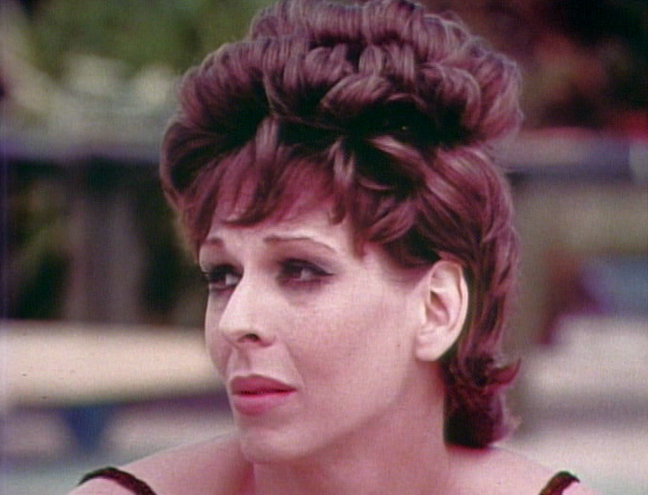 Dolly Sharp, Deep Throat (1972)
Dolly Sharp, Deep Throat (1972)
*
New York, early 1970s
Who was Dolly Sharp?
When ‘Deep Throat‘ hit big after its release in June 1972, the lives of those involved were never the same.
Linda Lovelace became America’s first porn star celebrity before turning into porn’s first victim, co-opted by feminism as human proof of porn’s damaging effect on women.
Harry Reems’ dreams of a mainstream acting career died overnight, and to make matters worse he was then put on trial in Memphis with assorted mobsters, accused of conspiracy to transport obscene material across state lines; he was adopted as a symbol of artistic freedom by the Hollywood liberal elite before being dropped just as quickly.
Gerry Damiano, spent the rest of his life making pornography and looking over his shoulder fearing the return of the connected men that had threatened his life after ‘Deep Throat’.
But no one knew much about the film’s supporting actress, Dolly Sharp.
Over the years, I quizzed everyone who had crossed paths with her during her stint in adult films. Jamie Gillis, Harry Reems, Ed Seeman, Jason Russell, Gerry Damiano, Fred Lincoln, Eric Edwards, crew members, and friends.
Everyone remembered her vividly. And yet no one knew anything about her.
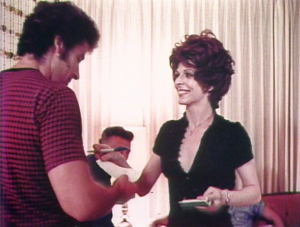 All of the stories were near-identical. Dolly was an older woman, probably in her late 30s. Her hard and severe features weren’t unattractive, but she looked like she’d wandered onto set from a bygone Lucille Ball-era. Her body was lean and strong like that of an athlete, and she was surprisingly supple and limber, capable of putting her both feet behind her head at the same time – always useful on a porn film set.
All of the stories were near-identical. Dolly was an older woman, probably in her late 30s. Her hard and severe features weren’t unattractive, but she looked like she’d wandered onto set from a bygone Lucille Ball-era. Her body was lean and strong like that of an athlete, and she was surprisingly supple and limber, capable of putting her both feet behind her head at the same time – always useful on a porn film set.
She would turn up with a folded chair, a small dog, a portable TV, and a bag of knitting. She kept to herself and rarely spoke to anyone.
Where did she come from? Everyone had a theory. She was a bored housewife. She was a sexually-starved swinger with a rich husband. She was an ex-con who couldn’t find regular work.
Actress Tina Russell wrote in her autobiography ‘Porno Star’ (1973) that Dolly was a Long Island hooker, hustling for cash in go-go bars – which she spent on wigs and plastic surgery.
Harry Reems’ autobiography described her as a failed artist, ex-violinist, ex-ballet dancer, ex-go go dancer, and bit part movie actress.
Back in the early 1970s, several journalists looked for Dolly Sharp, but their search was in vain; by the time ‘Deep Throat’ became a success, she’d split. Fearful that her role in the film would be exposed, she’d fled New York never to return.
*
Early Years, 1935 – 1949
Dolly Sharp was born Helen Wood on April 25th 1935, in Port Arthur, Texas.
Her Irish father, Michael, was a seaman who skippered a tanker, The Gulflube, which traveled between Port Arthur and Philadelphia. The long absences from her father resulted in close bonds with her German mother, a tough, demanding woman with exacting standards. After Helen underwent an early back operation, her mother decided that Helen needed to strengthen her core, so she enrolled her two year old daughter in Florence Coleman’s dance studio in town. Helen had a natural talent and progressed fast.
Then she picked up a dime store tin violin and showed such an uncanny feel for the instrument that her mother bought her a real one and invested in regular lessons with local teacher Alice Kent. Soon Helen was playing in county fairs and in state variety shows. Once when she was six, Helen appeared in Beaumont and renowned violinist Jascha Heifetz saw her play. He offered Helen a lesson and was amazed by her natural talent. He declared “Ms. Wood is destined to become a quite brilliant concert violinist”. He recommended to Helen’s mother that she move the family to New York where she could enroll Helen in the prestigious Juilliard School of Music.
Another big name who was impressed was Jan Garber, a jazz bandleader known as “The Idol of the Airwaves” at the time. He signed the eight year old Helen to appear as the special attraction of his band; she was billed as ‘Helen Wood – The Child Prodigy – The Triple Threat’, on account of her ability to dance, sing and play the violin, and she toured with the band for a few months.
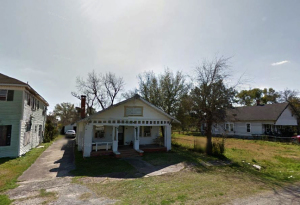 Helen’s mother made sure that her daughter’s skills were showcased in performances across the state. She started to be called ‘The Texas Tornado’ on account of the speed of her twirling dancing. Neighbors remember Helen’s dedication and her constant practice in front of her house (shown on right) at all hours of the day and night.
Helen’s mother made sure that her daughter’s skills were showcased in performances across the state. She started to be called ‘The Texas Tornado’ on account of the speed of her twirling dancing. Neighbors remember Helen’s dedication and her constant practice in front of her house (shown on right) at all hours of the day and night.
Eventually when Helen was twelve, her mother took Jascha Heifetz’ advice and moved the family to New York where Helen and her sister were enrolled at Juilliard. The technical standard of the school was much higher than anything that Helen had experienced before, and she found herself having to re-double her efforts and re-learn much of her technique.
To help fund the trip, Helen’s mother took her to the Conover Model Agency – then known as one the ‘Big Three’ largest in the U.S. The agency owner Harry Conover had worked with many top stars like Rita Hayworth, and when he saw Helen’s photographic portfolio he took out trade ads declaring that she was his No.1 junior model. Soon Helen was in demand as a teenage clothing model earning $10 an hour for her efforts – good money at the time. She was disdainful of the work however. Modeling was not a job that required much talent or effort and she ached to return to performing.
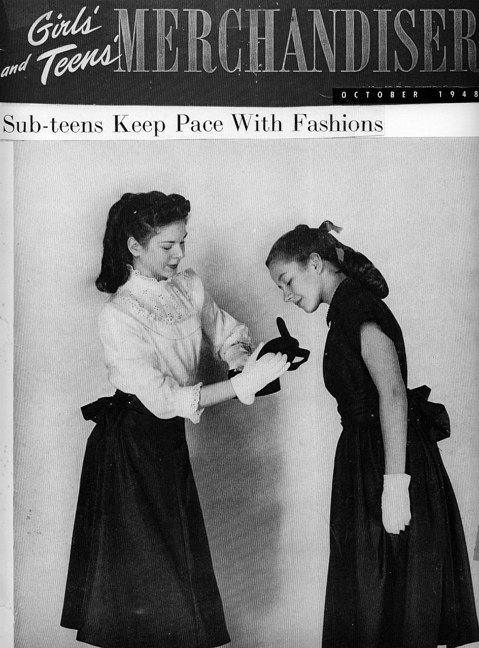 Helen Wood (left) in an early modeling picture (c. 1948)
Helen Wood (left) in an early modeling picture (c. 1948)
Apart from the violin and singing classes at Juilliard, Helen also attended classes at Lee Strasberg’s Actor’s Studio, and studied dance at Agnes de Mille’s Ballet Theater.
It was at the latter that de Mille spotted Helen’s talent and signed her for her debut role on Broadway as a dancer in ‘Gentlemen Prefer Blondes’.
*
Broadway, 1949 – 1952
‘Gentlemen Prefer Blondes’ opened at the Ziegfeld Theater in December 1949 and starred Carol Channing. This was four years before the release of the film version directed by Howard Hawks and starring Jane Russell and Marilyn Monroe, and it was a huge hit. The New York Times described it as a “vastly enjoyable song-and-dance antic put on with humorous perfection… every part of it is alive and abundantly entertaining”. Despite her small role, Helen was catapulted into the limelight granting interviews and appearing in magazine photo spreads. Gossip columnist and Broadway chronicler, Earl Wilson, featured her frequently in his column.
Helen was 14 when ‘Gentlemen Prefer Blondes’ opened, and was still nominally enrolled in Thomas Jefferson School in Port Arthur (the same school as Janis Joplin, who was eight years younger). In practice she did school work in New York between rehearsals and performances on Broadway. She did well academically – even though her studies took an inevitable back seat to her increasing success.
It was a busy schedule; Helen was still studying at Juilliard, modeling, and had also started making appearances in television shows – from soap operas to dramas and commercials. She first showed up as a dancer in Eddie Cantor’s new TV show ‘Comedy Theater’ in September 1950, and then in a TV version of ‘No! No! Nanette!’ in March 1951 featuring Jackie Gleason.
She told one interviewer, “I’m 15. That means I still have to attend a professional children’s school three hours a day. Besides that, I take dancing lessons four hours a day, and violin and singing lessons twice a week. Then there are the eight shows a week plus the special rehearsals too”.
Everyone who knew her remembers her talent but also her single-minded dedication and discipline. She was obsessed with the notion of perfection, and pursued it obsessively in everything she did.
After over a year in ‘Gentlemen Prefer Blondes’ she moved to a more prominent role in the new musical ‘Seventeen’ that was being produced by comedian Milton Berle. Rehearsals started on April 27th, 1951 and lasted a month before two weeks of previews opened on May 24th.
‘Seventeen’ opened on Broadway at Broadhurst Theater in June 1951 and it was covered extensively in the New York media. Helen’s performance immediately won plaudits, and she was described by one critic as having a “scintillating presence”. Though the musical wasn’t as big a success as ‘Gentlemen Prefer Blondes’, Helen’s star was in the ascendant.
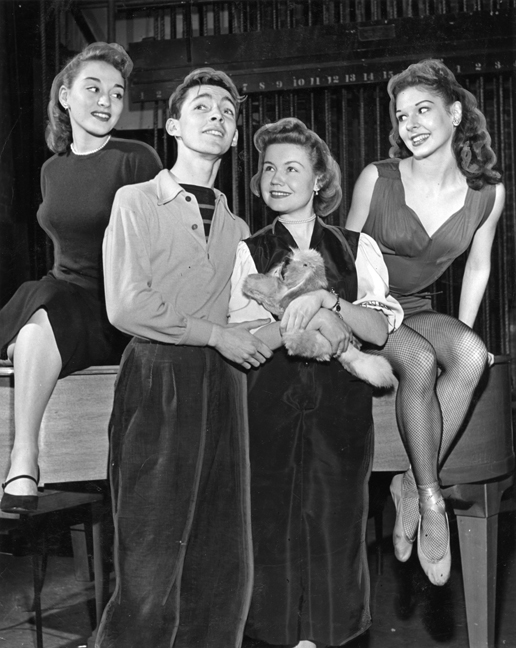 Helen Wood (right) in rehearsals for ‘Seventeen’ (1951)
Helen Wood (right) in rehearsals for ‘Seventeen’ (1951)
Despite her young age, Helen’s strong character came to the fore when she and several of the other actors recorded the soundtrack album – but received no pay. Under Equity rules, actors were entitled to one week’s salary for each day engaged in the recording of a cast album, so Helen and her fellow actors threatened Milton Berle and the other producers with legal action, eventually winning $3,450 each for their recording work.
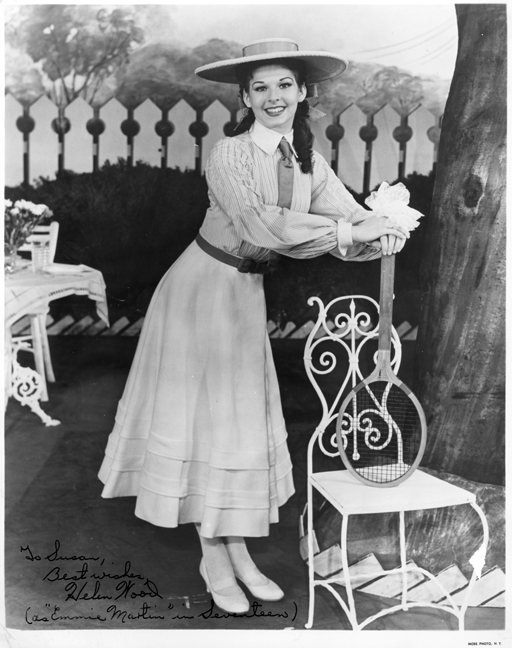 Helen Wood as ‘Emmie’ in ‘Seventeen’ (1951)
Helen Wood as ‘Emmie’ in ‘Seventeen’ (1951)
‘Seventeen’ ran for five months, and by the time it closed in November 1951, Helen had been hand-picked for one of the most eagerly anticipated new openings of 1952, a revival of the Rogers and Hart musical ‘Pal Joey’ starring Vivienne Segal, Lionel Stander and Elaine Stritch.
‘Pal Joey’ opened to great acclaim at the Broadhurst Theater (the same location as ‘Seventeen’) in January 1952. The New York Times reported that it “renews confidence in the professionalism of the theater”, and the production went on to win several awards at the annual Tony ceremony.
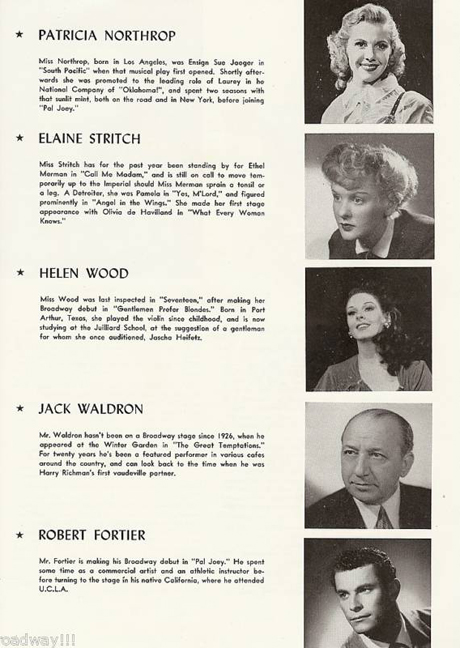 Extract from the ‘Pal Joey’ Playbill (1951)
Extract from the ‘Pal Joey’ Playbill (1951)
Even better for Helen was the individual praise directed her way. The New York Times called her “an excellent dancer”, and the Brooklyn Daily Eagle noted, “Helen is a lovely youngster with excitement in her dancing – she’s bound to go places”.
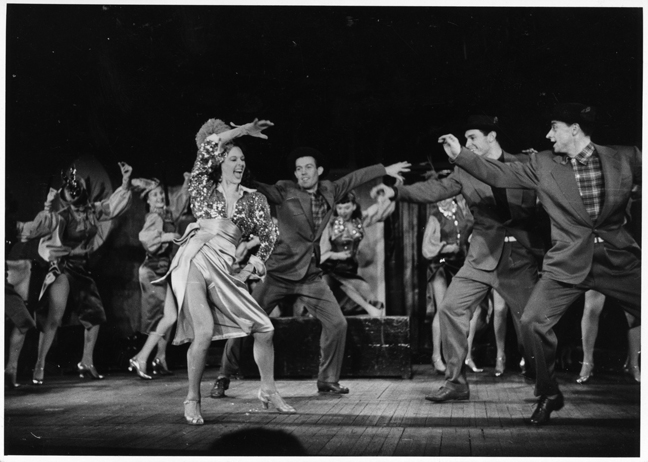 Helen Wood in ‘Pal Joey’ (1951)
Helen Wood in ‘Pal Joey’ (1951)
In January 1952, Helen made her first appearance on the ‘Ed Sullivan Show’, which at this point was still called ‘Toast of the Town’. Ed Sullivan‘s show was straight out of old vaudeville featuring brief acts of every description, from slapstick comedy to operatic arias. Stiff and expressionless, with a peculiar voice and a talent for mispronunciation, Sullivan was an unlikely but successful host and he took an immediate liking to Helen. She would appear three more times on the show over the next two years, culminating in a guest appearance in October 1953 with boxer Joe Louis and singer Guy Mitchell.
That year she won a prestigious Theatre World award for being one of the twelve ‘Most Prominent Stage Personalities of 1952’. A fellow winner that year was Audrey Hepburn for her role in ‘Gigi’. The twelve award winners were given plaques at a glitzy reception at the Algonquin Hotel.
‘Pal Joey’ lasted over a year, during which time Helen graduated from high school. It was reported that she received graduation presents and flowers from many of the casts and crews that she’d worked with who’d helped her with her school work over the years.
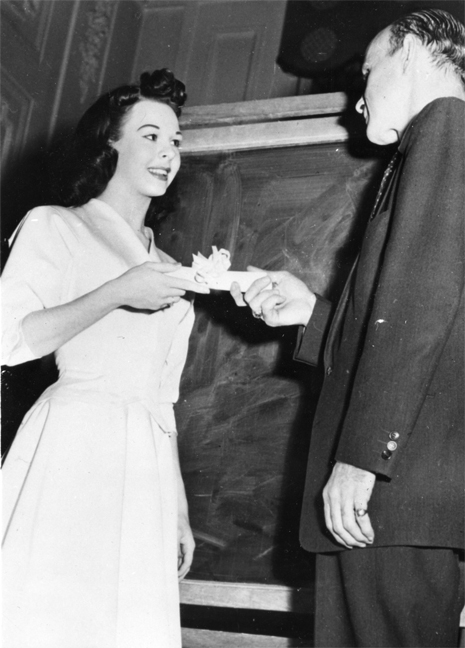 Helen receives her diploma from the principal of the School for Young Professionals (1952)
Helen receives her diploma from the principal of the School for Young Professionals (1952)
In June 1952, Helen was enticed away from ‘Pal Joey’ to join a new stage show at the Roxy Theater – a leading New York showcase that combined the latest Hollywood films with highly rated stage variety shows. The Roxy engaged many noted performers of the era, including singers, comedians, classical ballet dancers, even the New York Philharmonic.
For Helen it was the chance to stretch herself creatively and choreograph her own routines for an audience for the first time. She immediately impressed – but her engagement only lasted a few months: Hollywood came knocking.
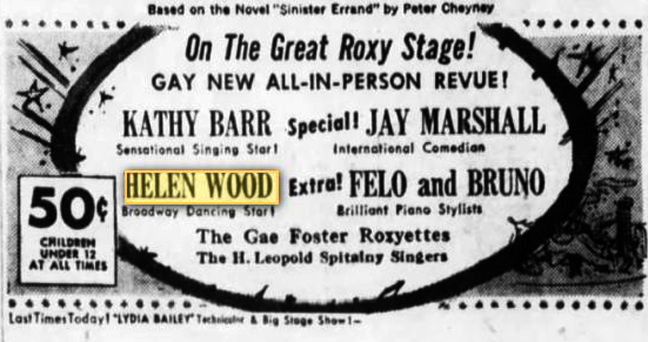 Helen debuts in the new Roxy show (1952)
Helen debuts in the new Roxy show (1952)
*
Hollywood and Las Vegas, 1952 – 1958
In September 1952, 20th Century Fox offered Helen a seven year contract.
She was 17, and due to the fact that she was underage, the contract had to be approved by a Santa Monica court first. The court obliged specifying only that Helen had to set aside 20% of her earnings in savings bonds.
The contract itself offered her $500 a week which would increase to a maximum of $2,000 if the studio exercised all its options on her.
20th Century Fox’s first decision was to loan Helen out to MGM who were looking for a lead in their highly anticipated musical ‘Give A Girl A Break’. Helen auditioned and won the part, and flew to the MGM Studios in Culver City, California for the production.
On the face of it, ‘Give A Girl A Break’ (1953) had all the signs of being a huge success.
MGM was synonymous with musicals, and this one was to be directed by Stanley Donen, fresh from his huge hit the previous year with ‘Singin’ In The Rain’ (1952), and featured music by Ira Gershwin and Andre Previn. It starred Debbie Reynolds, Marge Champion and Helen as three aspiring dancers competing for the lead in a new Broadway musical.
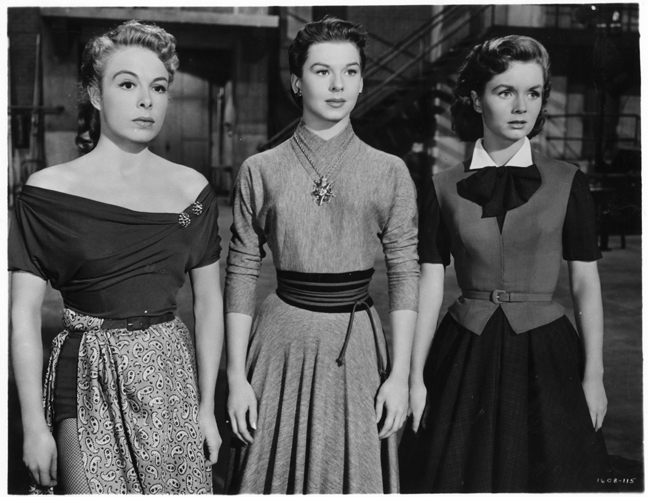 Marge Champion, Helen Wood, Debbie Reynolds in ‘Give A Girl A Break’ (1953)
Marge Champion, Helen Wood, Debbie Reynolds in ‘Give A Girl A Break’ (1953)
The production however was troubled from the start, and Helen walked into a storm of conflict and arguments. Donen had decided to make major changes to the script after the shooting had started, and the result was open warfare between Donen and two of the film’s stars, Debbie Reynolds and Marge Champion. Both believed that their roles were being reduced in favor of supporting actor/dancer Bob Fosse, and the fights split the cast and crew. In the end the studio sided with the Reynolds and Champion, and ordered reshoots; the lead dancers had their starring roles restored.
Helen appeared in a number of scenes, her ballet and jazz dancing contrasting with the more style dancing of Reynolds and Champion.
Helen Wood in ‘Give A Girl A Break’ (1953) (Helen’s sequence starts at the 1.24 mark)
The troubled set meant that the film had attracted negative publicity even before its completion, and MGM lost faith in the production. In the end studio executives premiered the film quietly in Brooklyn in December 1953 rather than the bright lights of Manhattan.
‘Give A Girl A Break’ was not well reviewed upon release; the Monthly Film Bulletin referred to “a very lightweight story… and as a result the film tends to drag”. Pauline Kael wrote, “it is an unusual MGM musical in that it is modest, but it is so modest that it has no particular flavor or distinction”.
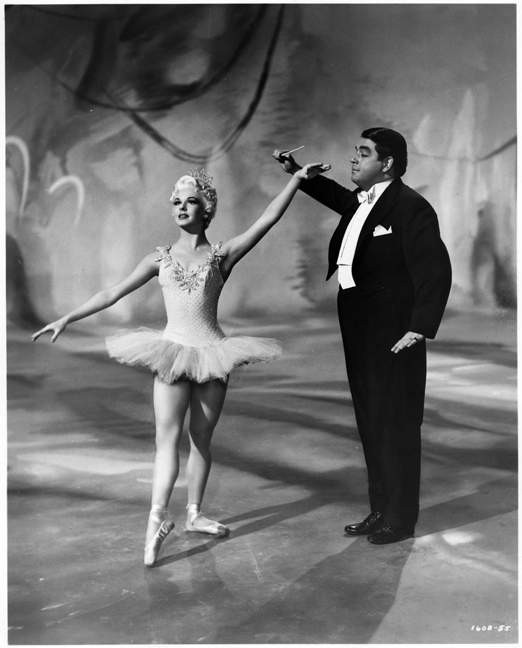 Helen Wood, Kurt Kaszner in ‘Give A Girl A Break’ (1953)
Helen Wood, Kurt Kaszner in ‘Give A Girl A Break’ (1953)
According to MGM records the film cost almost $2 million, and only earned $772,000 in the US and Canada, and $506,000 elsewhere, resulting in a loss.
Despite the film’s initial reception, it’s reputation has grown over the years, and it’s now recognized as one of the best lesser-known musicals that MGM ever made.
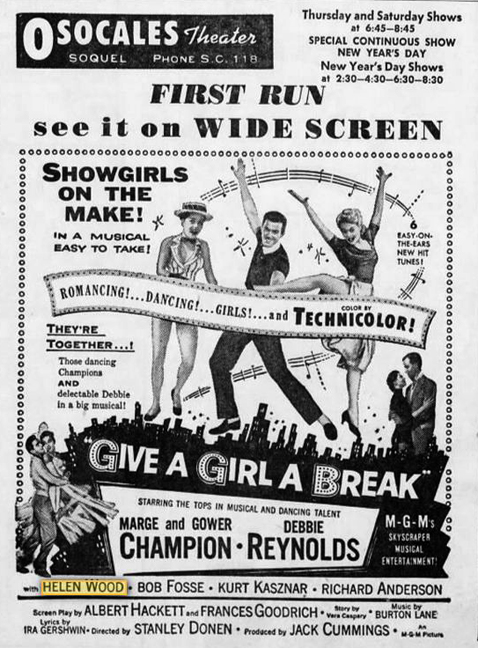 Newspaper listing for ‘Give A Girl A Break’ (1953)
Newspaper listing for ‘Give A Girl A Break’ (1953)
Not that this helped Helen though. Her first Hollywood film had been a flop. Whilst she waited for 20th Century Fox to show signs of interest in her, she returned to Broadway in late 1955 to take a lead part in the musical Delilah, but more bad luck ensued as her part was cut out during the tryouts.
Helen’s name still guaranteed big offers, and her next stop was Texas where she starred to some of the biggest audiences in her career in the State Fair Musical production of ‘Can Can’, receiving rave reviews.
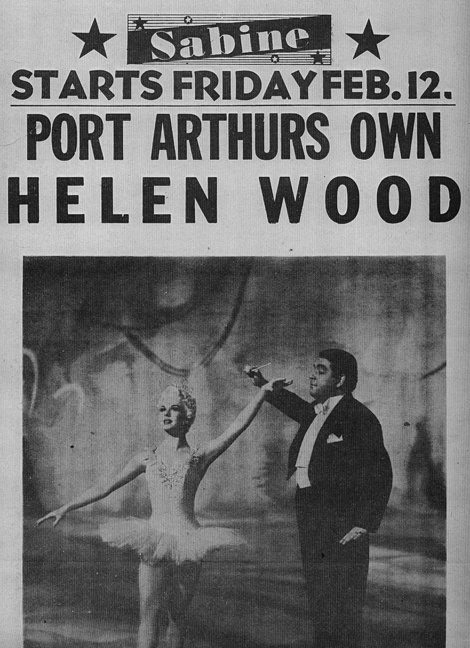 Helen Wood returns to Texas for ‘Can Can’ (1956)
Helen Wood returns to Texas for ‘Can Can’ (1956)
It was also the time when Las Vegas was attracting the big names, and so Helen moved there to work in a series of shows on the Strip. Many stars, such as ‘Give A Girl A Break’ co-star Debbie Reynolds, were featuring in variety spectacles there; it was the early days of the rat pack, and Las Vegas was full of dancers, comedians, showgirls, and singers.
In 1955 Helen opened the New Frontier as the main support for Liberace, and footage from the first night shows her name in lights. In 1956 she appeared at the Riviera, with Dinah Shore and Marie Wilson included on the bill, and again with Liberace in 1957.
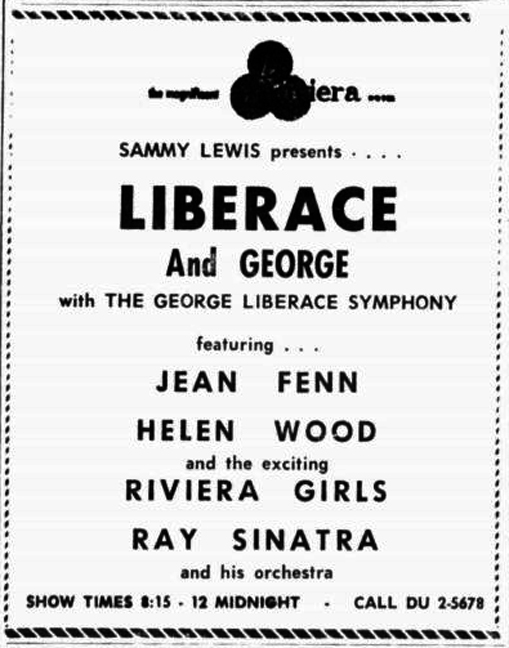 Liberace, Helen Wood star at the Riviera (1956)
Liberace, Helen Wood star at the Riviera (1956)
Off stage she was just as popular and counted many of the stars as friends; she was close to bandleader Louis Prima, singer Keely Smith, and Sammy Davis Jr. with whom she did a short-lived act. Sammy told her that she was the only white dancer that he’d ever seen that moved with real soul. The local newspapers linked Helen romantically with a number of performers, including comedian Shecky Greene.
People who worked with her in Las Vegas remember her as being as driven and ambitious as ever. Not that she was motivated by material wealth however; instead she was dominated by the desire to be the best possible performer, and she could be overly severe with herself, and others, when they didn’t meet her high expectations. She was competitive, had a high opinion of her own abilities, and was happiest when she was surrounded by similarly talented peers.
*
Return to New York, 1958 – 1970
Throughout her appearances around the country, Helen maintained links with New York and frequently traveled back for dancing engagements and regular television appearances on the Eddie Cantor, Dave Garroway, Jackie Gleason, and Milton Berle shows.
Her most frequent guest spots were on the Ed Sullivan Show. In just over a year, she appeared with Burt Lancaster and Tony Curtis (June 1956), Robert Mitchum (March 1957), and Joan Collins and Robert Wagner (November 1957), in addition to being a featured guest for the Ninth Anniversary Special show. Sometimes she would dance, sometimes she would play the violin and sometimes she would sing. And sometimes she would play the violin whilst dancing and end with a song. Helen became close with Sullivan, and there were rumors of an affair (Sullivan had been married since 1930).
Helen returned to Broadway in the musical revue ‘Ziegfeld Follies of 1957’. The show was the final attempt to revive the Follies, a series of lavish revues that had been hugely successful in the 1920s and 30s.
The musical opened in New York at the Winter Garden Theater on March 1st, 1957 after previews in Miami in January. It received much press, but the format was by now considered dated, and it closed in June 1957 after 123 performances. Helen followed this was a starring role in the production of ‘Rosalie’ in Central Park.
Meanwhile the seven year contract that 20th Century Fox had signed with Helen in 1952 was coming to an end – with little sign that the studio was interested in casting her in any new films, so Helen accepted a prestigious permanent dancing role; the principal position in the Ballet Corps at the Radio City Music Hall in New York.
Radio City had been in business since 1932, and was the pre-eminent venue in town for the then-familiar format of a feature film plus a spectacular stage show. The show featured the Ballet Corps and the Rockettes, a synchronized eye-high kicking troupe of dancers. Helen was always at pains to express how she had nothing to do with the Rockettes, which she viewed as being down-market, less skilled and unexpressive.
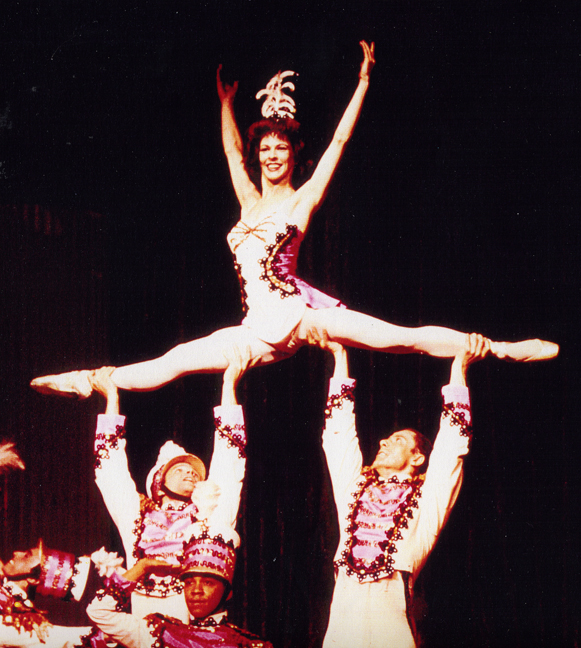 Helen Wood at Radio City Music Hall, New York (early 1960s)
Helen Wood at Radio City Music Hall, New York (early 1960s)
She was there for eight years, turning in over 3,000 performances, and receiving much acclaim for her regularly-changing routine. She would dance in a variety of different styles and enlisted some of the most famous dancers of the time to appear with her. These included Eugene Slavin, the soloist with the Metropolitan Opera Ballet and the Ballet Russe de Monte Carlo, and Jonas Moura, Brazil’s leading dancer and choreographer.
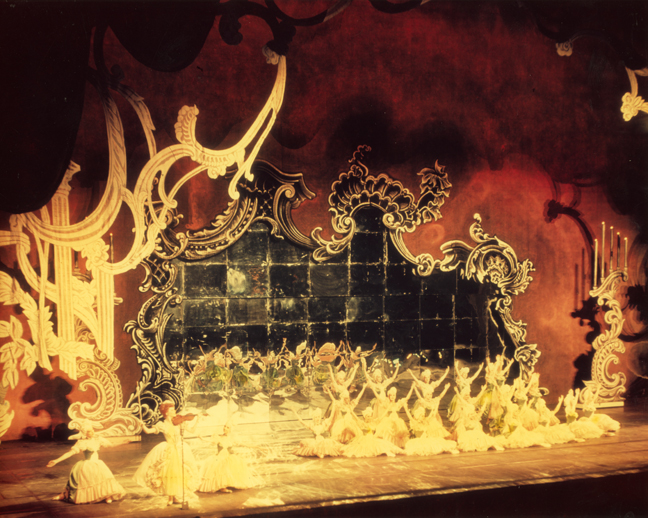 Helen Wood at Radio City Music Hall, New York (early 1960s)
Helen Wood at Radio City Music Hall, New York (early 1960s)
During this time, she was often featured in the gossip pages. It was reported that she was seeing Richard Zanuck (future ‘Jaws’ (1977) producer and son of movie mogul, Darryl Zanuck), and Wall Street banker, Gilbert Anderson. Helen was often photographed in the company of noted media figures like radio commentator Walter Winchell, and newspaper columnist Earl Wilson. However in the mid-1960s she surprised everyone and got married to a man unconnected with show business called Ed, and together they had a son.
By the mid 1960s, Helen wanted to try something new and explore different ways of dancing. In 1965 she joined the Zigani Ballet, a Hungarian acrobatic troupe that danced at the Latin Quarter nightclub in New York. The ballet had been started by Sonja Loew, an arts patron and socialite, and wife of E.M. Loew, who owned a chain of movie theaters. The group featured Nora Kovach and her husband and fellow ballet dancer Istvan Rabovsky; the two had been the first highly publicized defection of individuals in the field of dance to the West from the Soviet bloc.
The troupe was another huge success and Helen played a starring role. She combined her classical style of ballet and jazz dance to the gypsy styles of the group and won immediate plaudits. Zigani Ballet went on tour Puerto Rico, Canada, Miami, and had a residency at the Dunes Hotel in Las Vegas.
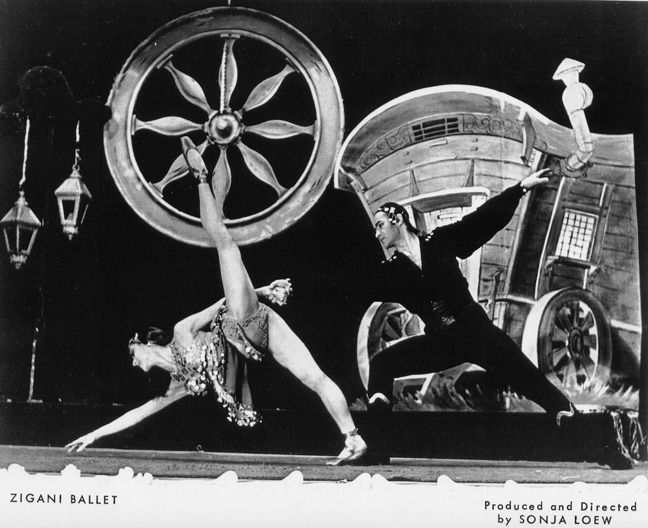 Helen Wood and the Zigani Ballet (1966)
Helen Wood and the Zigani Ballet (1966)
When the act folded after a couple of years she returned to Radio City on an occasional basis, but approaching 35, Helen found prominent dance roles were increasingly difficult to secure. Despite her rigorous practice routine that she still did on a daily basis, her body was changing and she wasn’t the young dancer that had arrived in New York almost two decades previously. She was competing against much younger girls for parts, and losing out more often than not. But Helen’s stubbornness and steadfast belief in herself was stronger than ever, and she refused to accept that she should yield the spotlight to a new generation. In an effort to appear younger, she took the then unusual step of undergoing breast augmentation surgery, having silicone injected directly into her chest.
Occasionally interesting work still turned up, like the film ‘The Night They Raided Minsky’s’, a 1968 musical comedy directed by William Friedkin. It was the first musical shot entirely on location in New York, and the budget exceeded $3 million, making it the most expensive film shot in the city up until that time. Helen was cast as one of the dancers, and though it was not a lead role, she had plenty of screen time to showcase her abilities.
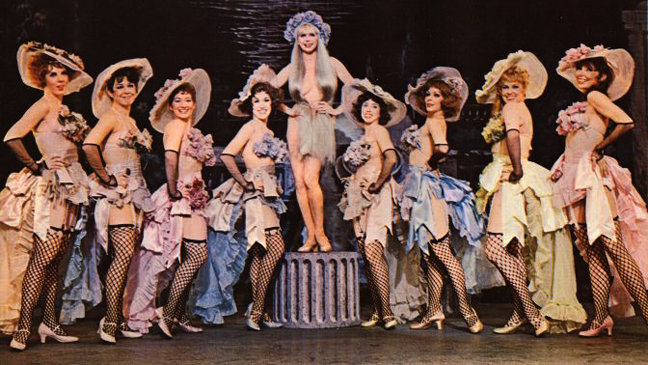 Helen Wood (third from right) in ‘The Night They Raided Minsky’s’ (1968)
Helen Wood (third from right) in ‘The Night They Raided Minsky’s’ (1968)
The film is a fictional account of the invention of the striptease at Minsky’s Burlesque in 1925, and starred Britt Ekland and Jason Robards. It’s plot had similarities with Helen’s own story in that it tells of how a girl from rural Pennsylvania arrives in New York hoping to make it as a dancer. Not finding the success she expected, she eventually becomes a burlesque stripper.
‘The Night They Raided Minsky’s’ (1968) (Helen can be seen at the 2.40 and 3.25 mark)
The film received good reviews for its tribute to old time burlesque. Time magazine called the film “a valedictory valentine to old-time burlesque”. It also proved to be the endgame of Helen’s dance career. The following year she got an acting part in a New York crime film Stiletto’ (1969) but her part was cut from the final edit.
Helen’s marriage was suffering, and Ed and she divorced. She was left with a son to raise, and for the first time needed to look beyond the dwindling opportunities in the performing world.
*
New York, adult film years, 1970-1973 – The creation of Dolly Sharp
In 1970, Helen responded to a newspaper ad that was looking for talent for ‘Low budget and independent films – nudity required’.
She turned up at the door of Tallie ‘Chick’ Cochrane, a pocket-sized, fiery Southerner, sometime actress and make-up artist, who ran her own agency for sexploitation films out of her apartment in the Camelot building on 45th St in New York.
“Dolly came in my office one afternoon dressed in a trench coat and high heel shoes. She put her rain coat and umbrella down, and said “I’m Dolly Sharp”. I said “Well, I’m glad to meet you, Dolly Sharp. I’m Chick. Tell me what you’ve done”. She said “Well – this is what I’ve been doing most of my life,” and she took her leg and lifted it above her head – straight up like this – unbelievable! It was like looking at a contortionist!”
Tallie was getting more and more requests for people willing to appear in loops, and one of her most frequent clients was Sam Menning.
Sam (right) was an ex-ship captain, actor, underwear designer, nude photographer (he took some of the most famous pictures of Bettie Page in the 1950s), and general scoundrel who, by the late 1960s, had turned into an 8mm loop shooter.
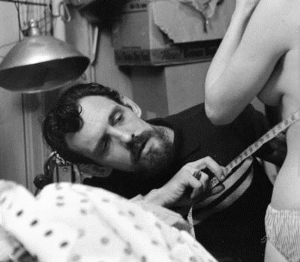 Sam started with softcore single girl loops which he sold directly to a variety of Italian and Jewish mobsters who in turn supplied Times Square bookstores. But as sexual permissiveness increased, community standards loosened, and the demand for explicit sex scenes grew. Sam adapted quickly and became one of the first regular producers of pornographic shorts.
Sam started with softcore single girl loops which he sold directly to a variety of Italian and Jewish mobsters who in turn supplied Times Square bookstores. But as sexual permissiveness increased, community standards loosened, and the demand for explicit sex scenes grew. Sam adapted quickly and became one of the first regular producers of pornographic shorts.
Sam remembered the first time Helen turned up for work: “She surprised me when she first walked in because most girls who turned up were 19, 20 years old. I mean if I got a girl who was 24, I was surprised because we considered that to be old. Most of the people who I filmed were students, or actors and musicians. Young people basically who needed a little extra money to keep their dreams alive”.
Sam also remembered that she had no sexual qualms, and was willing to do sex acts that some of the other new performers wouldn’t consider. She was acrobatic too, able to bend her body into all kinds of surprising shapes and positions.
To everyone she met in adult films she called herself Dolly Sharp, which, unbeknownst to anyone at the time, was a reference to her favorite singer, Dolly Parton. To further disguise her involvement, Helen wore a selection of ill-fitting wigs.
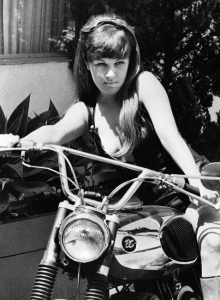 Tallie Cochrane (right) remembers: “I bonded with her a little as we were both from the South, but she was always pretty reserved and private. I thought that she was married and that her husband perhaps didn’t know about what she was doing – but we knew better than to pry. ‘Dolly Sharp’ just did not sound like a real name, so we knew there was probably more to her than met the eye.”
Tallie Cochrane (right) remembers: “I bonded with her a little as we were both from the South, but she was always pretty reserved and private. I thought that she was married and that her husband perhaps didn’t know about what she was doing – but we knew better than to pry. ‘Dolly Sharp’ just did not sound like a real name, so we knew there was probably more to her than met the eye.”
In many of her loops, she appeared with the first couple of early New York pornography, Tina and Jason Russell. Their relationship with Dolly was an uneasy one; they belonged to a different generation and were direct products of Woodstock, free-love, and sexual liberation, and Dolly was viewed with mistrust.
Jason Russell remembers: “We didn’t know what to make of her. She seemed old enough to be one of our parents, and she had these weird eccentricities. Like she’d spend lots of time with the director asking him questions about how best to ‘block’ a scene or who her character was, and she’d ignore the rest of us. We considered ourselves a close knit group; this was a time when we thought we were going to get busted because sex films were illegal, so we all stuck pretty close together. Not Dolly though. She thought she was something else.”
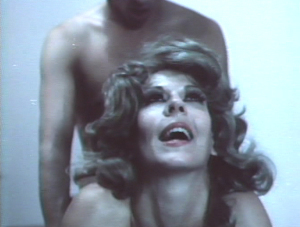 By 1971, explicit feature length films were starting to be made. The sex film industry in New York started as a mix of different genres, each lobbying to get around the censors ire – and Dolly appeared in them all. There were ‘white-coat’ pseudo documentaries purporting to be educational ‘Sexual Customs in Scandinavia’ (1972)), earnest attempts at an artistic view of sex (‘Millie’s Homecoming’ (1971)), or just extensions of loops into a narrative feature (‘His Loving Daughter’ (1971)).
By 1971, explicit feature length films were starting to be made. The sex film industry in New York started as a mix of different genres, each lobbying to get around the censors ire – and Dolly appeared in them all. There were ‘white-coat’ pseudo documentaries purporting to be educational ‘Sexual Customs in Scandinavia’ (1972)), earnest attempts at an artistic view of sex (‘Millie’s Homecoming’ (1971)), or just extensions of loops into a narrative feature (‘His Loving Daughter’ (1971)).
Early adult film actor Fred Lincoln appeared in a number of these films with Dolly: “There was a time when Dolly was on every shoot. I remember Tallie saying that Dolly had brought in more money for her than anyone except for Harry Reems. One thing I’ll say for her is that she was a pro. Always punctual. She’d show up and get her costumes on and her make-up and she’d just sit there and read her book until it was time for her to perform. She was like a secretary in the background. She was never much of a socializer but I kinda liked her.”
Actor Alex Mann remembers a couple of details in particular: “She had this little dog that went with her wherever she’d go! It was crazy. This dog was devoted to her. The dog was even in the background of a couple of her films. And she had a tiny TV as well which she used to plug in and watch. We called her the ‘Soap Opera Queen’”.
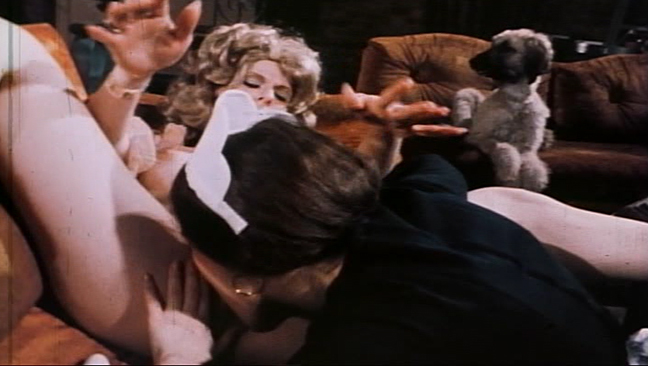 Dolly Sharp (and her dog) in Millie’s Homecoming (1971)
Dolly Sharp (and her dog) in Millie’s Homecoming (1971)
Dolly had a unique sexual presence on film; she was stronger, more confident, less coquettish than other female performers. Her body was more toned and athletic than her softer co-stars, and she was unusually expressive, pulling faces that alternated between agony and ecstasy.
Harry Reems, a frequent co-star, remembered her well: “She was a strange one. We were clearly not people she felt comfortable knowing. I didn’t find her a turn-on – she was older, not my type… it was like having sex with my aunt. Plus she had these strange, hard, pointed breast implants.”
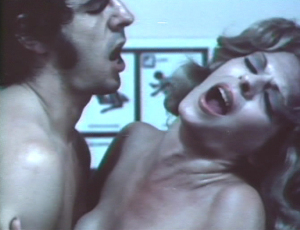 “She had no limits sexually though, and was one of the first girls to offer to do anal sex scenes. You have to remember this was when men were paid $75 for the day, and women received $100. Dolly asked for an extra $25 if she did anal sex.”
“She had no limits sexually though, and was one of the first girls to offer to do anal sex scenes. You have to remember this was when men were paid $75 for the day, and women received $100. Dolly asked for an extra $25 if she did anal sex.”
“But I was fascinated by her; I knew that she had some kind of secret, and I wanted to find out what it was. I tried joking around with her but she seemed to have no sense of humor. I asked a bunch of people about her, and someone told me that she used to be a performer… a dancer, I think. That could have been true because she was the most flexible person I ever had sex with.”
Towards the end of 1971, Helen was offered a supporting role in Gerard Damiano’s ‘Deep Throat’ that was being shot over the Super Bowl weekend in Miami in January. Helen had a boyfriend who she referred to as ‘Billy Love’ who occasionally appeared with her in loops. She made sure he got a role in the film as well and they drove down to Florida over New Year.
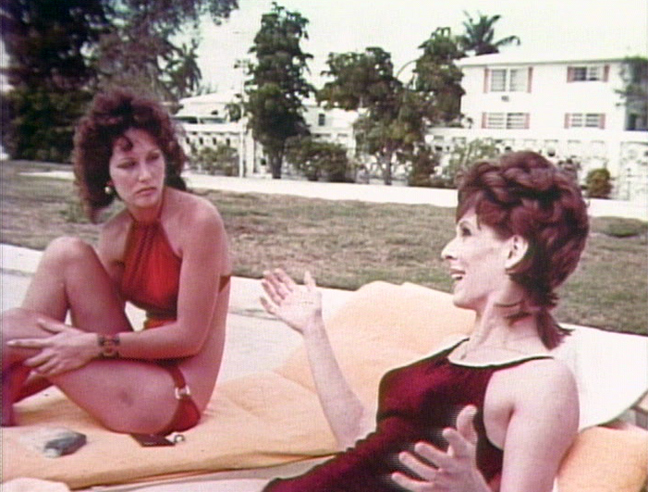 Linda Lovelace, Dolly Sharp in ‘Deep Throat’ (1972)
Linda Lovelace, Dolly Sharp in ‘Deep Throat’ (1972)
Despite the Florida location, Deep Throat was still considered a modest venture for the time. Linda Lovelace, who had only appeared in a handful of loops, played the lead, and Harry Reems, who had originally been hired for the lighting, was cast opposite her as Dr. Young. Helen played Linda’s older, wiser friend – a character called Helen in the film.
As far as Helen was concerned, the film’s production passed without incident, and after it wrapped, Helen and Billy returned to New York where she appeared in other X-rated films.
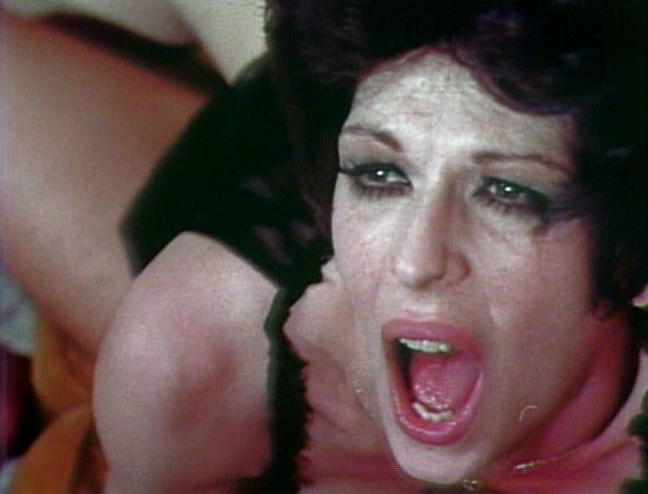 Dolly Sharp in ‘Deep Throat’ (1972)
Dolly Sharp in ‘Deep Throat’ (1972)
One of these was the Amero Brothers’ ‘Dynamite’ (1972). John and Lem Amero were making their first fully-fledged hardcore film. The brothers were amazed when Helen turned up; they’d long been regulars at Radio City and recognized her from her Ballet Corp acts there. Helen’s virtuoso performances, in which she often played the violin whilst dancing en pointe, had amazed them, and they would go to see her on a regular basis ensuring that they sat close to the front of the theater so they could marvel.
The Amero brothers never knew why someone as talented as Helen was now appearing in pornographic films. They never asked her or let on that they recognized her either. Perhaps they feared the truth. That the person they’d admired from afar was no longer able to support herself.
On June 12, 1972 ‘Deep Throat’ opened in New York at the World Theater in Times Square. None of Helen’s adult films had made any waves; no one paid any attention to the films that played at the grindhouses of the Deuce, but to her horror, this one was different.
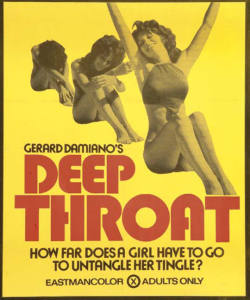 In the words of writer Lili Anolik: “The nation’s mouth gaped in a mixture of excitement, horror, fascination, and disbelief. ‘Deep Throat’ was the X film that went mainstream. It became a genuine sensation, one of the most profitable films ever made, costing a mere twenty-five thousand and bringing in a whopping six hundred million. It was responsible, as well, for ushering in the era known as “porno chic,” middle-class respectable types getting hardcore about hardcore. The New York Times Magazine devoted five pages of egg-heady rumination to it. Johnny Carson and Bob Hope cracked wise about it. And Truman Capote’s high-society swans migrated down to low-life venues to see it.”
In the words of writer Lili Anolik: “The nation’s mouth gaped in a mixture of excitement, horror, fascination, and disbelief. ‘Deep Throat’ was the X film that went mainstream. It became a genuine sensation, one of the most profitable films ever made, costing a mere twenty-five thousand and bringing in a whopping six hundred million. It was responsible, as well, for ushering in the era known as “porno chic,” middle-class respectable types getting hardcore about hardcore. The New York Times Magazine devoted five pages of egg-heady rumination to it. Johnny Carson and Bob Hope cracked wise about it. And Truman Capote’s high-society swans migrated down to low-life venues to see it.”
Suddenly the film was everywhere. Stills from it were being reprinted in magazines. The race was on to find out more about the people involved. Linda Lovelace and Harry Reems became celebrities, Gerry Damiano was supposedly being courted by Hollywood, and the intelligentsia clambered over each other to offer their opinions.
Helen went to ground in shock. Her boyfriend Billy Love disappeared. She’d had a vague plan to start teaching dance or the violin to children at some point, but her world was turned upside down now that everyone seemed to have seen ‘Deep Throat’. How could she turn up at a school or at some kid’s home and expect not to be identified? And how could she protect her son from this crazy melee?
The last straw was in 1974 when Harry Reems was arrested in New York by federal agents. ‘Deep Throat’ was widely reported to have been financed by associates of the Colombo crime family, and the authorities were looking for blood.
Helen took her son, grabbed her few possessions, and left town never to return.
*
The Missing Years, 1974-1998
Helen was fearful of returning to Port Arthur fearing exposure in her home town, so she settled in Winchester, Virginia with her son.
She became a waitress and lived a quiet life. Eventually she re-married and then got divorced again. By all accounts she rarely spoke to anyone about her stage career. She certainly never mentioned ‘Deep Throat’.
There followed an itinerant lifestyle traveling across country in a Dodge camper van, waitressing in town to town, stopping in Las Vegas and then settling in Los Angeles. By this stage the breast surgery she’d had in the 1960s was giving her health problems. She developed silicone granulomas – causing breast hardening that required treatment by mastectomy. She struggled on and in 1988, she met a man called John in the diner in Reseda where she worked. He was immediately impressed with her impeccable class, manners and grace.
John remembers their first meeting: “She was a few months older than me, and was in unbelievable shape for her age. I wasn’t immediately attracted to her, but there was something about her personality that just wouldn’t let go. It just pulled me in. She was very intelligent and vivacious and had this crazy laugh. We spent more and more time together.”
They started a passionate and tempestuous relationship. The highs were high, the lows were difficult and unpleasant. John found her to be a narcissist, and obsessed with achieving perfection in anything she turned hand to: “She may have been a waitress, but she wanted to be the best damn waitress there ever was. And she was. She took great pride in that”.
Above all, John remembers her discipline: “God… she was disciplined. And stubborn. I can’t believe that General Eisenhower and George Patton combined would have that kind of discipline. It was verging on a kind of mania.”
One day she opened up to him about her performing career. The dancing, the singing, the violin playing. The years of dedication, hope, and expectation. The shows, the applause, the awards. The films, TV, and variety shows. Ed Sullivan, Debbie Reynolds, and Liberace. Hollywood, Las Vegas and New York. Broadway, Radio City, and the Strip.
John didn’t believe her, but he was amused. Next time he saw her, she turned up with photographs. He believed her now. Yet, if this was all true, he couldn’t understand why she’d ended up working as a waitress.
And Helen wasn’t giving him any clues.
Five years into their relationship, John found out about her part in ‘Deep Throat’ from a friend who recognized her. John reacted badly. He confronted her, and she denied it at first. He lost it, and took it out on her physically. He later described his reaction as that of a maniac out of control. Helen contacted the police and he was threatened with jail.
Restraint orders, reconciliations, and long conversations followed. It was ugly and messy, but they found an uneasy truce and resumed their affair.
John became obsessed with the contradictions in her life, and asked her about her past constantly. Eventually Helen told him she’d just made the adult films for money. That she had only made a small number of films. And that she had little time for her fellow porn actors. She also admitted that at first she’d thought the only people who would watch her films would be dirty old men in long overcoats. Those kind of people didn’t mean anything, she said. None of them would ever make a connection to her former self.
Eventually she opened up more, and spoke about the existential similarities between dance and sex. Dance and lust and love and sex. Passion and pain. All inextricably linked and part of her DNA, she said. She couldn’t imagine existing without either.
Their relationship continued to be stormy, and eventually Helen was diagnosed as bi-polar. John remembers: “She had this scary ability to keep different parts of her life compartmentalized and kept completely separate. It was like even her left hand didn’t know what her right hand was doing. Her Broadway and performing career somehow existed in a completely different part of her psyche.”
In the early 1990s, Helen developed cancer of the colon. She beat it with her usual determined iron will power, but a few years later it returned aggressively.
John remembers: “They operated on her, and they were like butchers. They took her whole colon out. Then they gave her radiation. And the radiation burned up not only what was there in the colon but it went through to her intestines, and screwed them up too.”
“This is where her discipline came in yet again: They gave her a colostomy bag. She didn’t want it but they persuaded her it was necessary. And she was just amazing. She just acted like she was living normally – even though she was going through hell.”
Helen’s health deteriorated quickly after that. She died in John’s arms in November 1998. She was 63.
When Harry Reems, Linda Lovelace and Gerard Damiano passed, they were remembered in obituaries that endlessly replayed the cultural significance of ‘Deep Throat’. And the articles commented on the detrimental effect the film had on their lives
When Helen passed, no one noted the passing of Dolly Sharp. The effect of ‘Deep Throat’ on her life was just as significant, but unlike the others she had been able to live her dreams.
Before Helen died, John persuaded her to take out her violin. “I didn’t expect much as it had been years since she’d last touched it. But as soon as she picked it up, it was amazing. I was in awe. She played it with such passion, and the strength flowed straight back into her. Just like she’d never stopped.”
*
Miami, January 1972
Gerry Damiano shouted ‘Action!’ and the scene was underway.
It was a straightforward set-up; Dolly was to receive oral sex from a man knelt between her legs. Then she lights a cigarette, pausing only to ask her partner: “Do you mind if I smoke while you’re eating?”
It wasn’t what she had in mind for herself when she left Port Arthur to seek the bright lights of Broadway, but it wasn’t a big deal either. She was getting paid, laid, and was supporting herself. And no one needed to know anything else.
She figured that the films were cheap, tawdry, and forgettable, but guess what? That was a good thing. That meant that no one would ever see them.
Take this film for example: It would play briefly in cinemas that nobody would ever visit. Then it would lie in storage that nobody would ever remember. And then it would degrade and nobody would ever notice. Film stock is like a performer; it has a limited shelf life. It would soon be gone forever. In a world where everyone was interested in the next big thing, there’d probably be no record of her pornographic film career in a few years time.
She didn’t even know this film’s title.
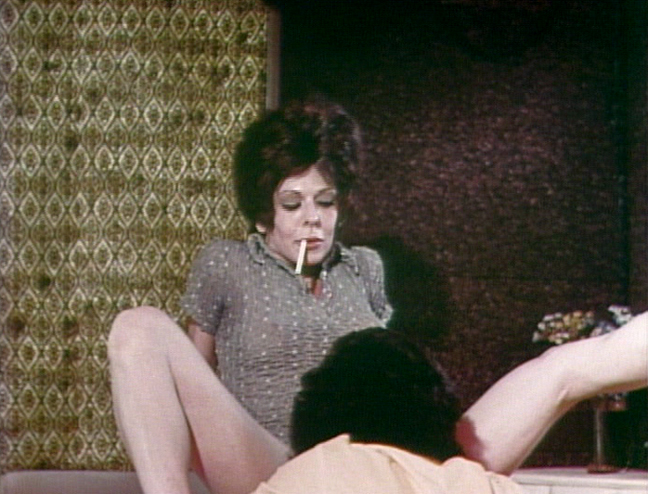 Dolly Sharp in ‘Deep Throat’ (1972)
Dolly Sharp in ‘Deep Throat’ (1972)
*
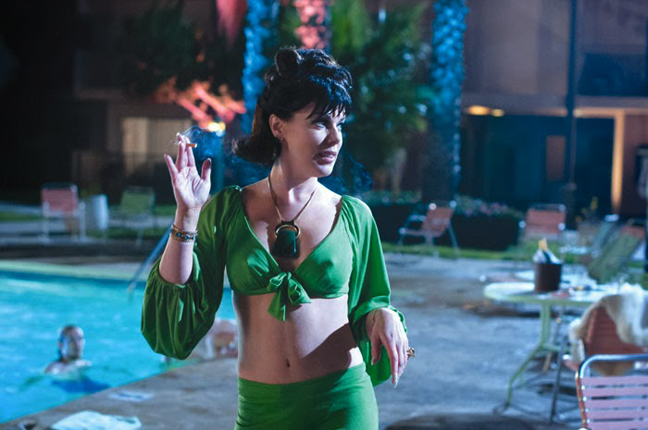 Dolly Sharp (aka Helen Wood) returns to the big screen in 2013 in ‘Lovelace’, courtesy of actress Debi Mazar
Dolly Sharp (aka Helen Wood) returns to the big screen in 2013 in ‘Lovelace’, courtesy of actress Debi Mazar
*
‘The Dancer – The Helen Wood story’, a documentary film, is currently in production.
Did you know Dolly Sharp? We’d love to hear about your memories, so please get in touch at info@TheRialtoReport.com
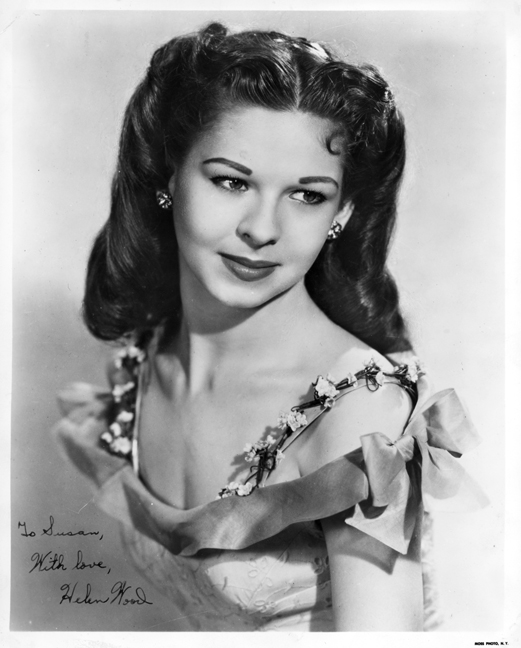
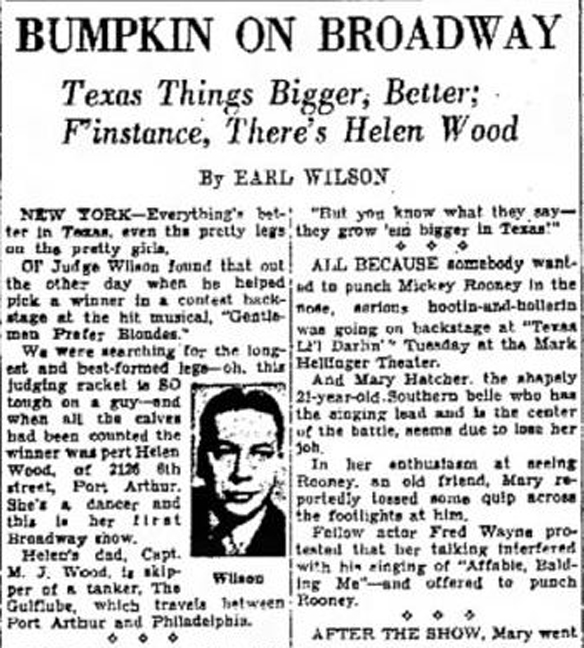
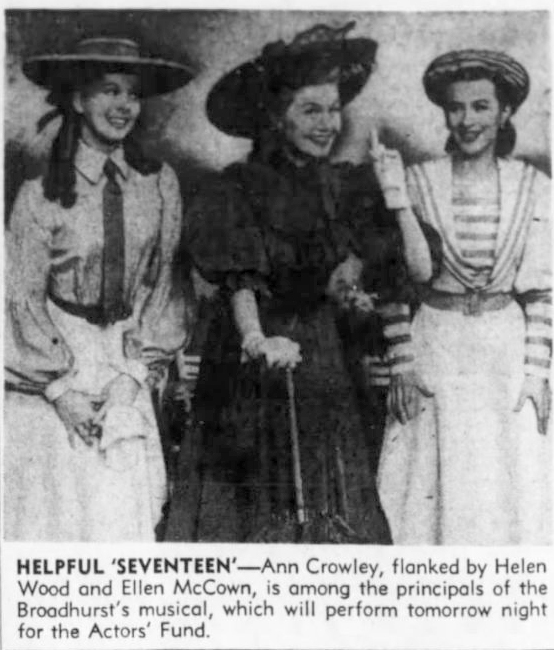
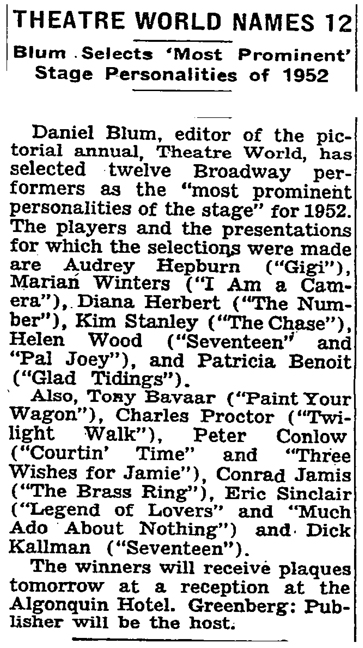
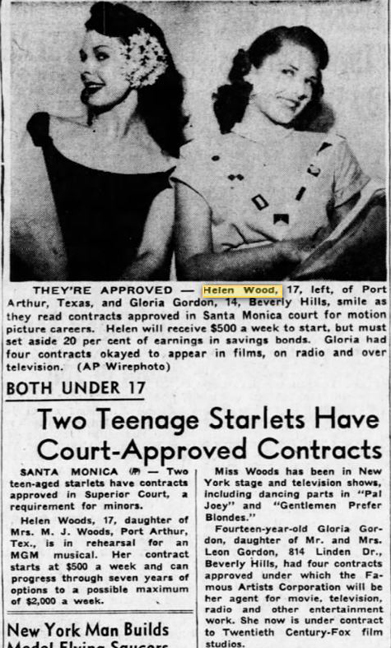
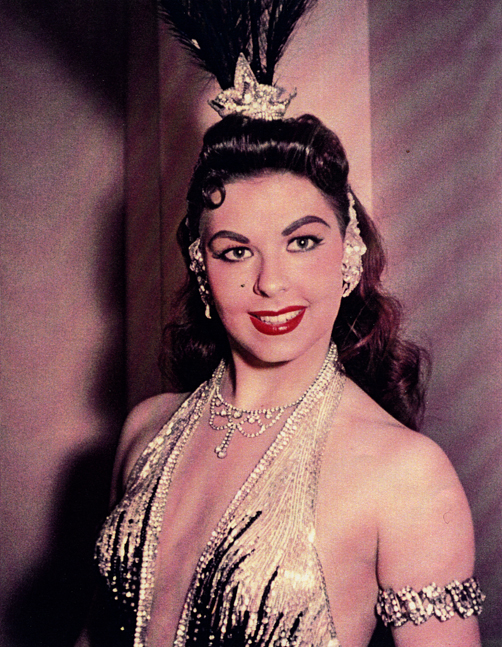
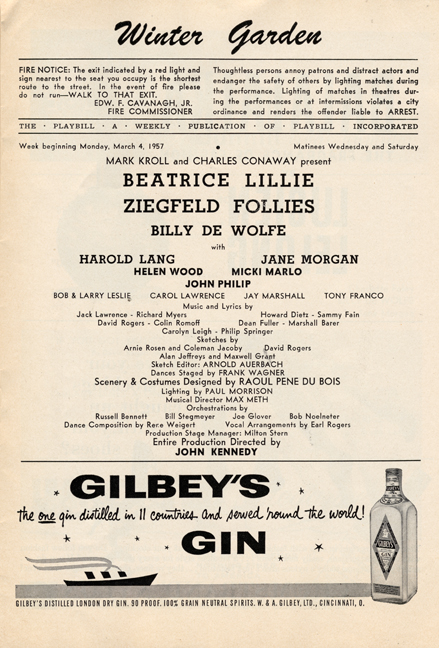
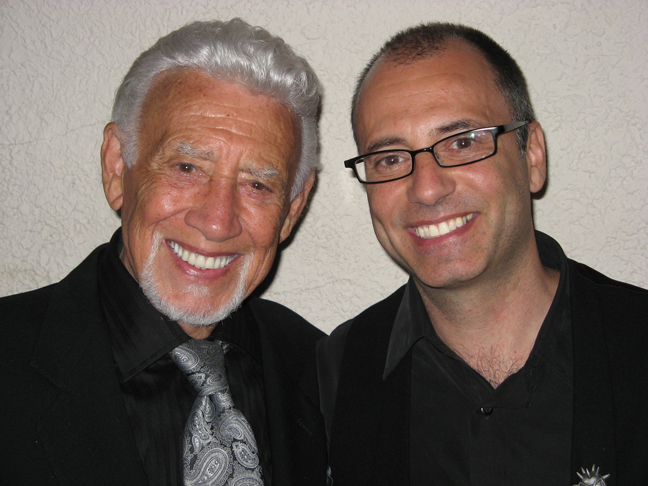
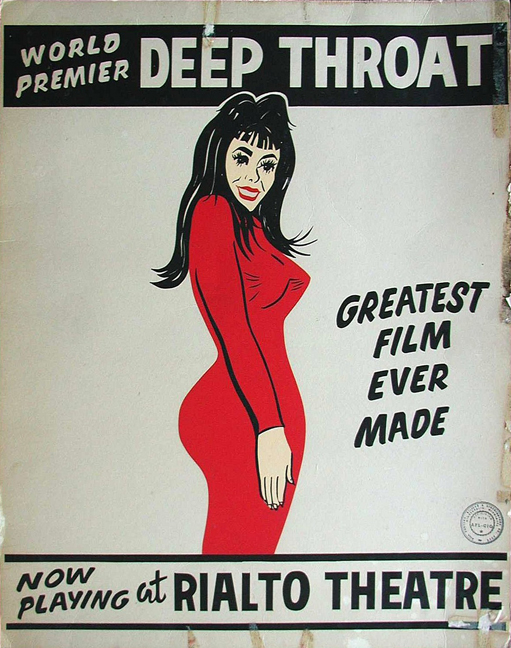
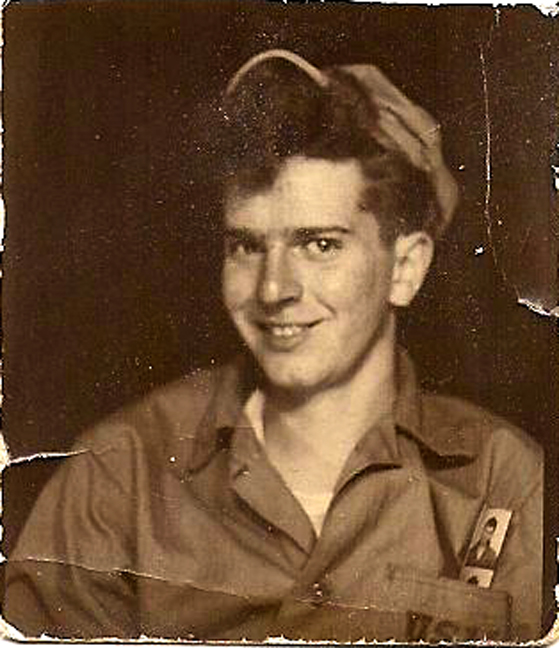
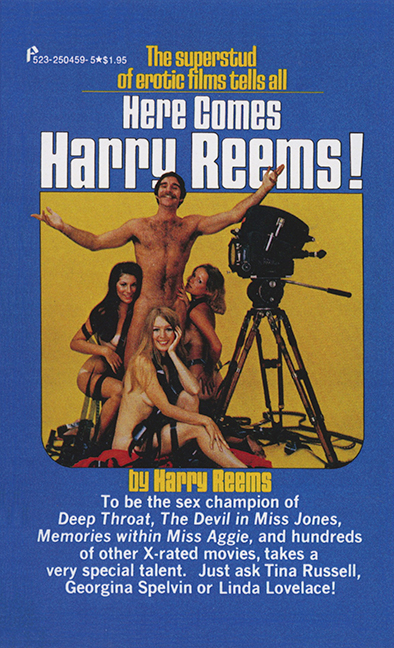
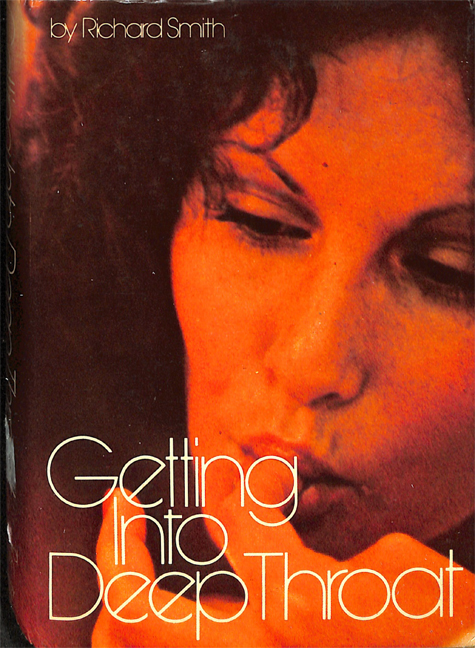

This is phenomenal… quite simply the most thorough piece of research that I’ve ever seen connected to the old-time adult years. I don’t know how you guys do it but you keep solving mysteries and telling the stories that are re-evaluating how this era is represented. Golden age history began in 2013 when The Rialto was established. And for that I thank you.
OMG……………………….. WTF……………………… Simply staggering!
I’m not worthy.
This is an amazing report – I don’t know whether to be happy for Helen or heartbroken.
Really, really, epic. This is breathtaking (and puts the paltry extras on DVDs into context).
Now I’m off to read it again.
Joe Marzano (Venus in Furs, Cool It Baby) who of course had ties to Lou Campa, swore he shot an Adult film with Dolly Sharp. He also recalled that he ran out of film during the cumshot. I was never really clear if this film was ever finished. He said he was shooting 16mm. He mentioned you could shoot a feature for the low thousands (in terms of cost) and sell for the high thousands. This is one of many stories I got from Marzano that never seemed to have an ending. Anyhow, great research as always, keep up the fantastic work.
That’s very interesting. I’m a great admirer of Marzano’s VENUS IN FURS and included it in the Sexploitation season I programmed for the BFI in 2009 (from a rare 16mm print in a double bill with I, MARQUIS DE SADE).
I hadn’t realised that Joe Marzano had shot hard-core. Do you have more information about this that you could share? Thanks.
Honestly I don’t, I was friends with Joe from 1987 through to 1991. He was shooting lots of shot on video stuff (not porn), and he was actually supposed to shoot an adult film I was putting together but we had a huge fight regarding the shooting and I booted him off the flick and out of my life. Prior to doing that I was supposed to interview him for my fanzine The Exploitation Journal but that never ended up happening. He spoke extensively of Venus in Furs and Cool It Baby, spoke quite a bit about Lou Campa but only mentioned the porn shoot with Dolly Sharp twice. Of course I’m sorry now that it ended up like it did but he wasn’t an easy guy to get along with. He died in ’99, he had a bad heart for a long time, wasn’t in the best of health when I knew him. He was supposed to play a mad scientist in a film I was doing that was supposed to be called Bigfoot on Campus but ended up becoming The Bloody Ape.
Bravo! Yet another brilliant piece of biographical research from Rialto Report. (One of many – where is your Pulitzer Prize?)
It is fascinating not only for filling in one of the few remaining pieces of the DEEP THROAT jigsaw but also as a tale of how harsh mainstream showbusiness can be for all but the few who make it to the very top and attain immortality.
I look forward to the documentary but can’t help thinking that this would make the most amazing musical. Mr Sondheim, don’t you read Rialto Report?
Wow. Just wow.
The original research that Rialto Report does is nothing short of stunning. Thank you, Ashley and April
“…existential similarities between dance and sex”– there is a deep truth here.
This is a really great story. Just like all your others.Such great information,and photos. You have made a great tribute to Helen. I always wondered what happened to her. The Rialto Report is the greatest.
You’ve done it again.
Ever since I first saw Deep Throat, I was turned on by the older woman hanging with Lovelace. I was hoping there would have been a happier ending for Helen Wood. Such a tragedy.
VERY SERIOUSLY: Please consider putting together a compilation of your pieces for a book. Legs McNeil did a good job with “The Other Hollywood”, but your work is thoroughly researched, highly informative, and an invaluable resource for those of us whose first thrills at seeing these wonderful performers when we were much younger are still with us.
Thank you for doing this blog for us….
Hearbreaking.
I know of a similar situation in AZ. A very gifted ballerina, who was accepted into the most prestigious dance schools, wanted fame, and needed money, was lured into porn. I know she was lied to and black-mailed by porn execs. to do a sex shoot she never agreed to doing. They got all her personal information from Facebook, and threatened to tell her family and friends if she refused to do a porn movie, albeit it was to be a bikini modeling job. Being 18 yo. she was scared to not do what she was told. “Claire”, is now under control of “Porn Gangsters” I would help her if I could find her.
The porn directors, refer to all female employees, as sluts, whores, or cum buckets. They are scum, death would be too good for them. GOOD LUCK “CLAIRE”
Wow. I had heard she had some sort of “legitimate” career and knew of “Give a Girl a Break”, but I had no idea she had a background like that. Amazing, to think of all that has been written and said about Deep Throat over the years; the most fantastic/interesting of stories went untold, until now. Yet, now that her story has come to light, I find myself unsure whether it’s a tragic tale of unfulfilled potential and lost dreams or, merely the arc of a career in entertainment and one individual’s efforts/choices to get by. In any case, Dolly Sharp was certainly far more than the footnote she’s been filed under for the past forty plus years.
Very interesting…however you state that there was ” no stone unturned “…I think the story of Carol Connors is a pretty interesting tale. She actually had a bigger role in Deep throat and then went on to be a major star in adult films…she also pretty much disappeared…
I’d like to hear that story…
james
Me too. I’d very much like to hear that, particularly the backstory behind Candy Goes To Hollywood, which I consider Golden Age Porn’s big middle finger to the ‘legitimate’ industry that spurned so many of the performers. I’d love to hear a podcast with her and maybe her husband Jack, but I understand they’re reticent because of the damage it might do to their daughter’s (Thora Birch) acting career.
I think Thora’s career has already been irreparably damaged, sadly. She’s only done two movies since 2010, and apparently currently has none in the works. She is considered difficult (at least in part due to her fathers involvement, though) and if you’re branded that and not a money maker in Hollywood, your career is essentially over. Especially if you’re female.
I know this much about Carol Connors:
– For a time in the 1970s, she was the buxom blonde who introduced Chuck Barris on The Gong Show
– She is married to fellow actor Jack Birch (who also appeared in Deep Throat)
– And here’s the big one – she is the mother of actress Thora Birch from American Beauty and Ghost World
Connors’ IMDB bio says she made her try in Hollywood but turned to porn after she couldn’t get a break. 30 years later her daughter has a major role in an Oscar-winning Best Picture. There’s an irony there worthy of a Greek drama.
The two Candy films seem to weave so many interesting largely-forgotten cultural threads in their X-rated tapestry: Terry Southern’s novel, and the bizarre major studio film with Ewa Aulin. A dumb blonde with a heart of gold that seemed equal parts Little Orphan Annie and Playboy’s Little Annie Fannie, on a voyage of self-discovery. Backing by the elusive Harry Mohny and direction (or so claimed) by Gail Palmer, the woman who would later sue Hunter S. Thompson for sexual harrassment. Casts that were a Who’s Who of the adult film stars at the time. The Gong Show and Wendy O. Williams. And a third sequel that’s listed on the internet but doesn’t actually exist. Good grief!
I have a vivid memory from around 1980 of seeing ‘Carol Connors – Candy Goes To Hollywood’ on a huge flashing marquee outside the upscale Roger Forbes Palace theater in downtown Seattle. To me, that epitomized the brief Porno Chic era. As Paul Harvey used to say, I want to know ‘the rest of the story’. And I think the Rialto Report are the only ones remotely up to the task.
Throat was released on my birthday, a destiny dateline testament to my own odyssey. I felt DS looked out of place in DT. And I detected a certain stylistic detachment from usual profiles as if this particular one was outsourced. But it is no less intriguing as this is a rating reversal of fortune unlike any other since there are only a handful of showbiz notables who shunned legit grace for porn like Jack Baker and the occasional former child star hit rock bottom.
Given the contrast juxtaposition of her various stage careers, I’d guess that the surname Sharp is a metaphorical reference to the W. M. Thackeray character Becky Sharp from Vanity Fair. If she had enough of mainstream work, the odd stage name was no doubt her tongue-in-chic farewell to the real world. While many luminaries fill this site, few are as fascinating as this true original. But others loom ahead…if and when RR ever transitions to the west coast.
Finally a team that takes the history of the industry seriously. (Note to bloggers, film reviewers, and academics: I’m not interested in your opinions because they are just… opinions. This factual history is too important to be left to Facebook and Instagram etc. and so on. Rant over).
Dolly’s story might be the best story that’s never been told. I only hope that some enterprising indie film company snaps this up and makes the film it deserves.
Erotic film history has no point of reference without literary opinions. Editorial commentary in storytelling provides complimentary footnotes. The writers of this site may themselves be perceived as academics inasmuch as they have a respect for X that is not forthcoming in mainstream. Sexual showbiz needs more sociological study or art critique beyond reporting. For in that other Hollywood, there’s always an intriguing depth of perception behind the reality.
I was so happy to see that you were profiling Dolly Sharp (Helen Wood). What a fantastic, in-depth biography! I’m constantly amazed at the incredible research you do and the intricate details you manage to bring to light.
I remember the first time I saw Deep Throat, and I particularly remember Dolly Sharp – not for her sexual performance, but for her overall persona. She had a strong, Hollywood-trained voice and tremendous screen presence, even in her fairly small role. Now I know why.
Bravo! Thank you for this wonderful, bittersweet remembrance.
Thank you Rialto Report for yet another mystery solved and another piece of XXX history documented so beautifully. What a wonderful piece. Loved reading it. I spent a lot of time with Damiano in 1973/4/5 and wish I could remember if he talked about Dolly or not. Ah, mammaries… of the way we were. xxx solidarity forever.
Fantastic! Thanks.
Thanks Rialto Report. As always, you did a great job.
Whew.You’ve just got to stop this,so I can catch my breath….
If this is how RR is gonna roll ALL THE TIME, I just don’t know
how I’m gonna handle it. The Helen Wood story is keeping
me from swallowing.The tear ducts just popped. Another
great piece. Blown over by the research and lovely matter-
of-fact POV. 40 years gone,we slipstream through time to
emerge…in a world so different from hers,yet still struggling
to find a (mainstream?) place for these stories.Still margin-
alized and ghettoized after all these years.Will the Helen
Woods of this world ever find peace? With the help of your
terrific work,we can only hope.
I had long wondered who was Dolly Sharp. Although an unattractive performer with day-glo makeup and oddly-colored hair, she stood out as the best and funniest actor in Deep Throat. I had always guessed Dolly Sharp once had a brief career in the mainstream before bottoming out in hardcore films. It turns out Dolly Sharp was once professional dancer Helen Wood — the woman whose dance sequences I had seen countless of times. A once brilliant dancer and musician who apparently suffered from mental illness. I found Helen Wood’s story to be tragic. It is too bad that when Helen Wood was once again in the spotlight as Dolly Sharp — due to the uncanny success of Deep Throat — that she did not embrace her new dubious fame. I am convinced that Wood’s once dimmed star would have once again shone brightly during the porn chic era, eyeshadow and all. Rest In Peace Helen (Dolly Sharp) Wood. And thank you.
Father Time is undefeated, he has never lost against anyone he has come up against. Just like a pro athlete, Dolly Sharp thought she would dance forever. But has you enter your mid 30’s father time comes along and tells you it is time to do something else with your life. Dolly had no college education and had developed no job skills or any type of career that would support her for the rest of her post dancing life. That leaves her as a 40 something waitress, her drive and ambition that drove her in dance would not help her in this phase of her life. Even if she was the best waitress in the country it is still a dead end job with low pay, not exactly the life Dolly Sharp saw for herself as a young rising star in Hollywood productions. It is a sad and tragic tale that happens to many starlets once they get older and can no longer make a living in showbiz. A tragic tale.
Catching up tonight, my eyes light up when I see the subject of your latest blog post. I click, proceeding with confidence. You’ll pardon me for saying so, but that confidence seems rare these days amid an internet chock full of half baked journalism and lazy reporting. But by now, I know this….when the Rialto Report steps up to the plate, they are going to hit it out of the park.
Thank you so much for yet another stunningly well done piece.
May God bless her spirit, and those who loved her.
Very in depth piece, had no idea Dolly Sharp was so driven and talented. I would like to see a piece like this done on Tiffany Clark, Tiff who is now in her mid 50’s came to New York to make a film and ended up falling in love with Fred Lincoln who was old enough to be her father. Tiffany appeared in just about every NY based porn film from 1980-1983 then left. Rumor was she got remarried and moved to Florida and had a couple of kids
Wow. Such incredible detail. Should I trust it? How is this possible?
Oh well. I suppose finding John was the key.. Great work as usual.. What a story..
Can’t thank you enough. I just knew there had to be two Helen Wood. I too was born in the md-thrties and saw Helen in the Broadway musicals, Pal Joey and Seventeen when we were both teenagers. I was an enormous fan and sent her a letter backstage. She sent me an 8 by 10 signed photo.
I scoured the internet to see what had happened to this beautiful talent and up came the information about the first Helen Wood, giving her birthdate as 1917 which puzzled me because the lady I recall was heavily publicized as being a teenager.Finally the mystery has been solved thanks to your fascinating investigative reporting.
Bravo!
great article on dolly….hard to believe i first saw her at radio city music hall and years later she was in my livingroom making “dynamite”…..she was the best performer in the film, a total pro.
Were you able to find out what happened to Dolly Sharp (Helen Wood)’s son? Did he know about “Deep Throat”?
I worked with Helen in the late ’70’s- early ’80’s at Valle’s Steak House in Springfield, Va. just outside of Wash. D.C. She occasionally made references to her glory days working with Liberace & the like & once showed me her scrapbook with signatures from Burt Lancaster,scrapbook Sammy Davis Jr.,, ect. Once boasting of being an actress, I responded ” yeh, I bet you did porn.” She replied ” Yes, I was in DEEP THROAT ” to which I said, ” No Helen, I think that was LINDA LOVELACE” It was a couple years later when I realized she was telling the truth although I don’t think she ever revealed it to anyone else on the job.She was largely considered a ball busting yenta know-it-all & she & I were pretty much nemesis’s. In spite of my irritation by her personality I never threw her porn career in her face which became known when a fellow cook bought the DEEP THROAT VCR tape & it made the rounds of most of the male employees. There were at least 2 guys on the job who were nailing her despite her insistence she had no need for men or sex. Her son ( who resembled actor Eric Stoltz) also worked there as a waiter for awhile & he was a very down to Earth pleasant guy. I’d heard rumors that she went back to L.A. after she left Valle’s. Helen once insited to me that Valerie Harper had once been her best friend. Upon meeting Harper in the early ’90’s she did say she’d known Helen but only slightly.
A fantastic story of a life lived of a true dynamic Women.
That’s spans from the Golden years of the Hollywood dream factory. To filth apartments of the 8mm Low rent porn. Helens Story , and her ultra ego
Dolly Would make a truly great screen play , and Movie. Far more here then the Film Lovelace had to offer us. Someone make this movie of this women life .
Amazingly detailed, well-written and beyond sadness.
Amazing report on Dolly. Always one of my favorites. Sorry to hear of her troubles. R.I.P. Thank you Rialto Report
Don’t believe I’ve ever read a more researched, detailed, fascinating article – written so lovingly.
I’m 58 now but was 19 I believe when I saw Deep Throat the first time (and it was my 1st xxx movie as well) Saw it at the Pussycat Theater in downtown San Diego circa 1977.
All I had heard for years was only about LL and HR, the main performers. Yes, Linda has most of the film’s intro to herself and I liked her right away. But as the pool scene unfolds early on – as she begins dialog with Dolly, I couldn’t help but be taken with Dolly (Helen) from that point on. I was struck by her personal magnetism and her Milfness. Oh what a MILF she was to me – and my very first.
Anytime today when the movie is referenced, my memories are always of Helen. To me, she seemed to be really enjoying her sex scenes – a HUGE turn-on – WAY more than anyone else was. She didn’t seem self-conscious in any way. That was just my experience. I later got into Carol Connors and Samantha Fox in a big way and am definitely staying tuned to RR here, hopeful to see them showcased.
Big round of Applause to you folks running this ship RR. You are what we here in the Florida Panhandle call ‘Authentic’ people. You treat our Film Idols of yesteryear accordingly – and it shows. LOVE what you’re doing and send lots of encouragement your way to keep up the good work.
A remarkable piece of cinema archeology. A fascinating and heartbreaking story of a real trouper, Thanks for digging deep to tell us her story.
This article was flat our mesmerizing! I was mildly curious as to who she was and now that I know her story? I feel very sad for her and I have so much respect for her as well. Thank you for writing this.
that was a great piece of investigative work you did, it was sad how she went down hill it seems, but she seemed to try and keep her head up and trudged on ward. thank you for your efforts
She was the best thing about the film.
The first time i saw her i would go WOW and still do.
I don’t know who you guys are but thanks for undertaking the painstaking job of researching into Helens ‘colourful’ life.
Reading about her obsessiveness with perfection etc drilled into her by her mother at an early age kinda rings true. ‘ve always felt since seeing Deep Throat around circa 1980 when I got hold of a copy on VHS, that she was the star of the show. Even though she didn’t appear on screen for long, her nonchalant delivery of that famous line “do you mind if I smoke while you’re eating” has stayed in my memory ever since first seeing it all those years ago despite all the porn I’ve seen since.
I dare say she would have gone on to be a big name in the world of porn if she’d wanted to but I guess she couldn’t handle the notoriety at the time considering the illustrious years she’d had earlier prior to porn.
Anyway I’m glad to hear she had some semblance of a normal life in her later years with John and that this remarkably multi-talented individual is going to be celebrated in a film/documentary.
The research in this report is nothing short of stunning. Hats off (again!) to The RR for another 5-Star piece! The big question is will a character like this show up on “The Deuce”?
I certainly hope so!
Just read this article–riveting stuff. However, instead of coming away from this article with sadness or pity, I see this as a testament to the toughness of Helen Wood. Yes, I’m sure her career didn’t turn out the way she planned, but she fought on through the ups and downs, and always gave 100% in everything she did. There’s a lot to admire here in terms of her character–even considering some of her ‘diva’ characteristics–and it seems she did the best she could with a bad hand dealt to her.
Yet another vanguard journey into the forgotten, ignored and demonized side of town. One of the most powerful qualities of The Rialto Report is that it humanizes the people who have been scorned all their lives. Reading about the forgotten Dolly Sharp makes me realize one universal fact. It only takes an insignificant event to derail and alter our life goals. It can happen to any of us. Thank agains, Rialto Report.
Ant update on The Dancer – The Helen Wood story?